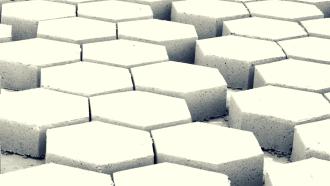
Ever wondered what’s common among whipped cream, mayonnaise, butter, ink, coloured glass and paints? It’s the fact that all these substances are ‘colloids’—a mixture in which microscopic, insoluble particles of one material is dispersed into another. Scientists study colloids to understand how the dispersed particles behave and to decipher phenomena like crystallisation and phase transition. Colloidal suspensions have different viscoelastic (viscosity+elastic) properties, owing to the interparticle interactions and their structure. Hence, understanding the stress-strain relationship and flow behaviour of these particles are gaining momentum.
Interestingly, the interparticle interactions can be changed or controlled by an external stimulus. Adding salt or applying electric or magnetic field can produce different structural organisation in the colloids and alter the flow property of the particles. In a recent study, researchers at the Raman Research Institute (RRI), Bengaluru, have shown what happens when an electric field is applied to Laponite nanoclay colloidal suspensions. The results are published in the journal Soft Matter.
Laponite is a synthetic clay which swells to produce a clear, colourless suspension when dispersed in water. In this study, the researchers have shown that when an electric field is applied, it can form soft, gel-like solids. The structure and the elastic nature of the soft solid can be altered by changing the electric field.
“The motivation of our work was to understand how the rheology (study of the deformation and flow of matter) of this particular colloidal suspension can be systematically altered by applying an external drive like an electric field, while simultaneously correlating the material structure to the observed rheology”, says Dr.Ranjini Bandyopadhyay, Professor at RRI and an author of the study.
The structure of Laponite particles resembles a disc and has a non-uniform charge distribution. Sodium ions from Laponite particles get dissociated when dispersed in water and form a diffuse layer of positive charges around the negatively charged Laponite discs, thus forming an electric double layer. When dispersed in water, the faces of the disc bear negative charges and the rim bears weak positive charges. The predominantly negatively charged particles repel each other and form a stable suspension.
In the current work, the researchers applied an electric field of strength varying between 2.5 kVm-1 and 10 kVm-1 to the Laponite suspension for 15 minutes. They observed that in each case, a soft solid was obtained, which under analysis showed a gradual increase in elastic nature and a corresponding change in the microstructure.
The researchers further noticed that under the influence of the electric field, the characteristics of the charged double layer around the Laponite particles change. The individual Laponite particles sense the external field and move towards the positive electrode, where particles interact with the electric field and with each other, rapidly forming clusters and attaining a soft gel-like structure.
Another remarkable observation was the changes in the structure of these colloidal particles under an electron microscope. The researchers saw that the soft solid, formed when a higher electric field strength was applied, had percolated network structure. The particles were found to be arranged in ‘house-of-cards’ and ‘overlapping coin’ structures. In a ‘house-of-cards’ arrangement, the face of one particle touches the rim of another particle, and the same stacking pattern continues. In an 'overlapping coin' arrangement, the particles stack on top of another like a jumbled pile of coins. In contrast, the soft solids obtained at a lower electric field strength had a more open structure, where there was less interconnect among the chains of particles.
The study identified that the soft solid formed with higher electric field exhibits a higher storage modulus—a measurement indicating that the material behaves like an elastic solid. This property is due to the networked microstructure of the soft solid. “Our gels are also stronger and more stable than, say, Laponite gels obtained by adding salt”, remarks Dr.Ranjini
When the researchers subjected the soft solids to stress test, they found them to be very fragile and required a minimal pressure to break. This fragility could be because these gel-like solids form rapidly, without structurally organising into an optimal configuration, say the researchers. Interestingly, they found that the soft solids formed at a higher electric field deformed in two steps—first, the cluster network made by chains of particles broke, and then the chains made by individual particles crumbled.
The research illustrates how the rheological property of the Laponite colloidal suspension can be modified by merely varying the strength of the external stimulus. As a next step, the researchers will attempt to form a reversible Laponite soft solid. “To use these materials as ‘smart systems’ needs more work. I guess that looking into the potential reversibility of this transition would be a good start”, says Dr.Ranjini before signing off.






